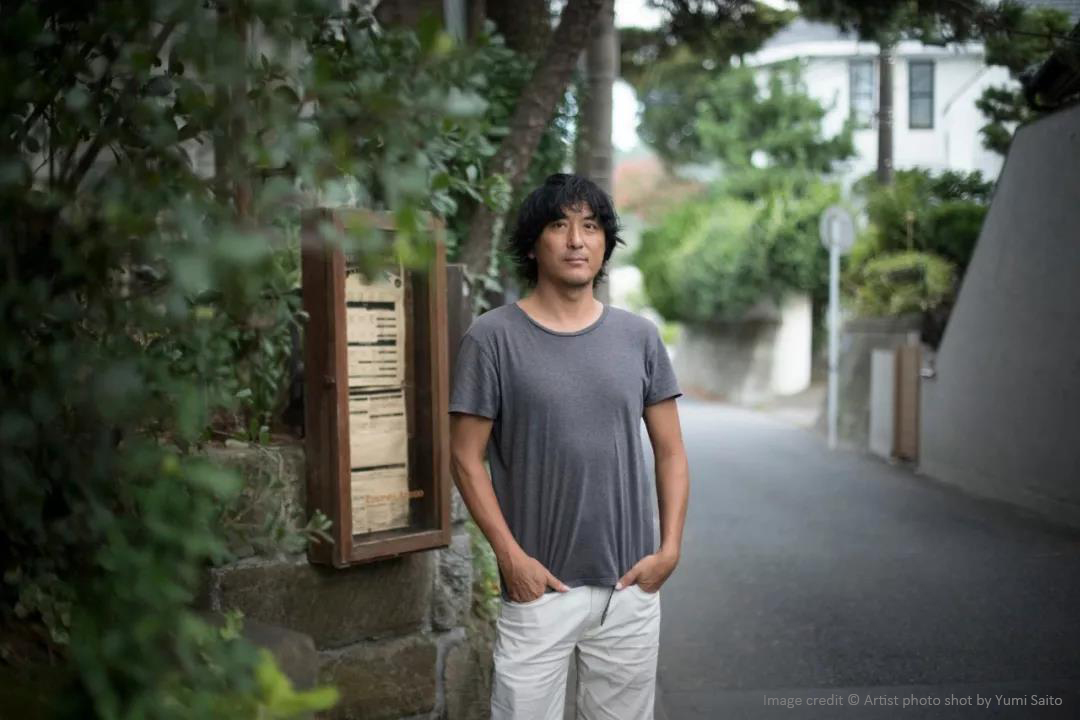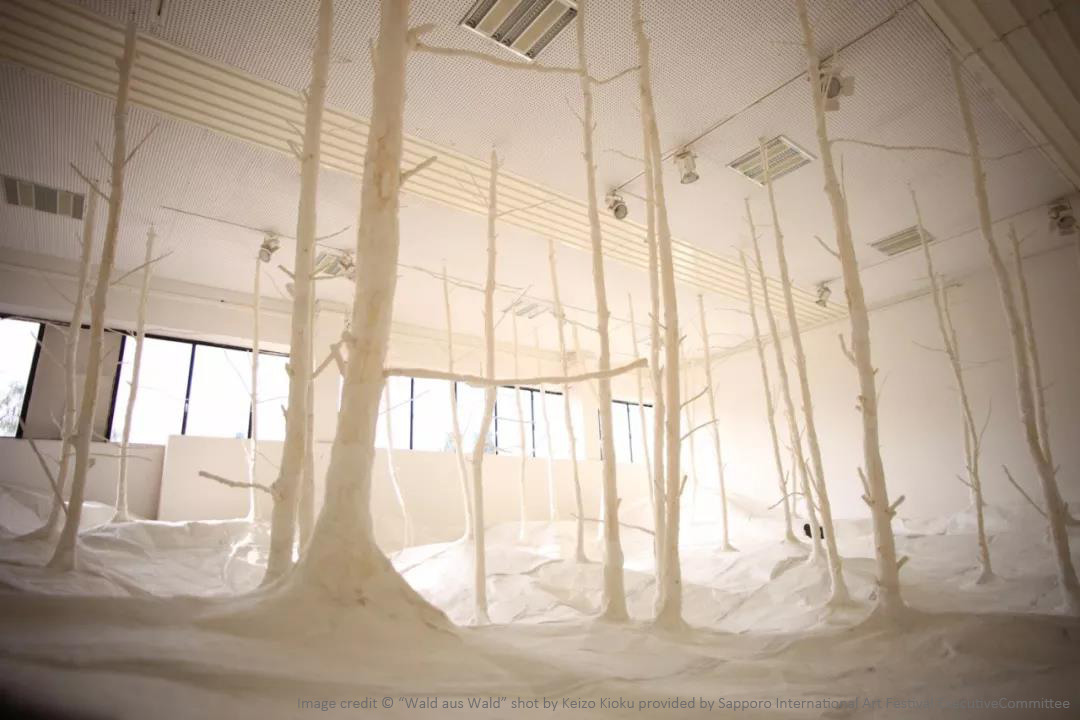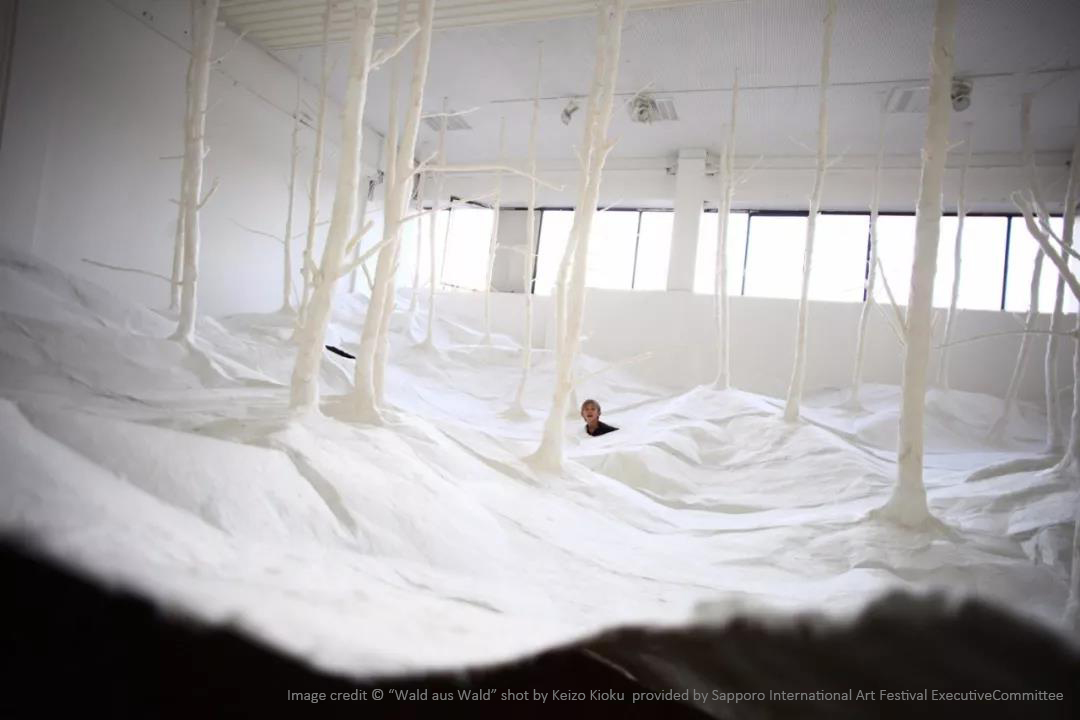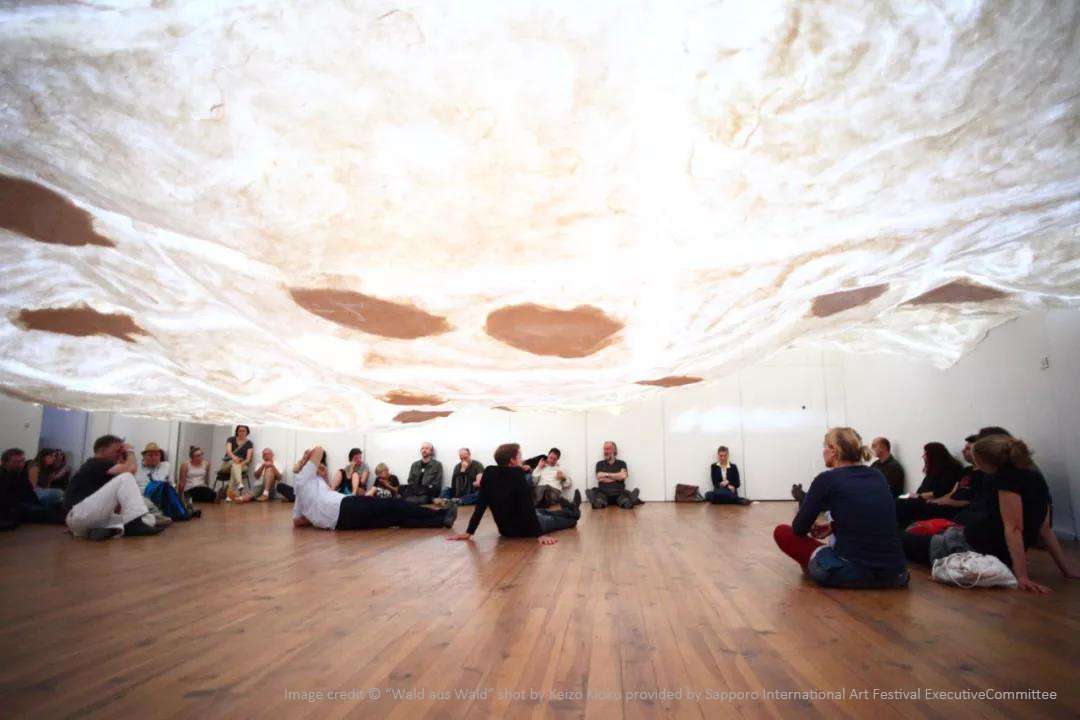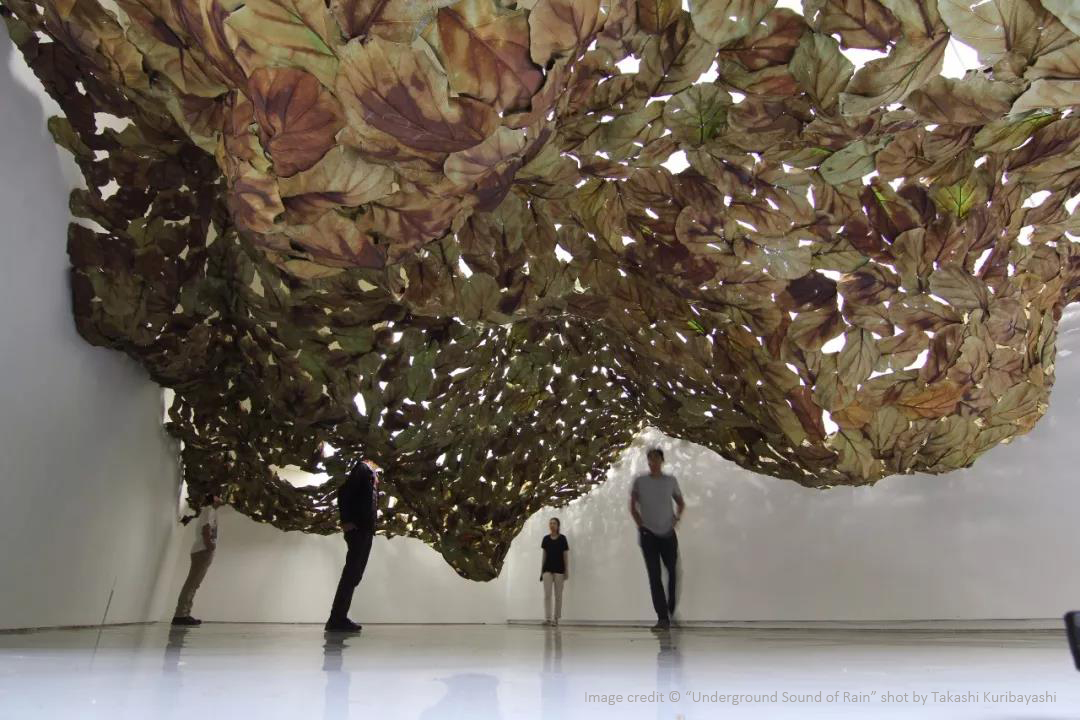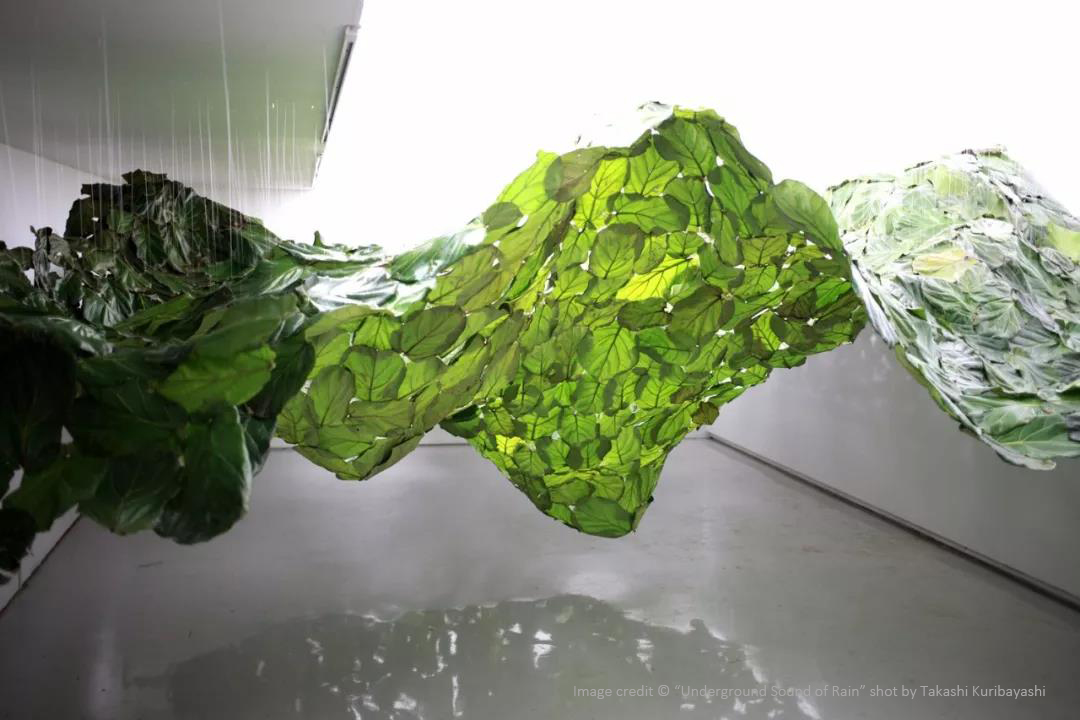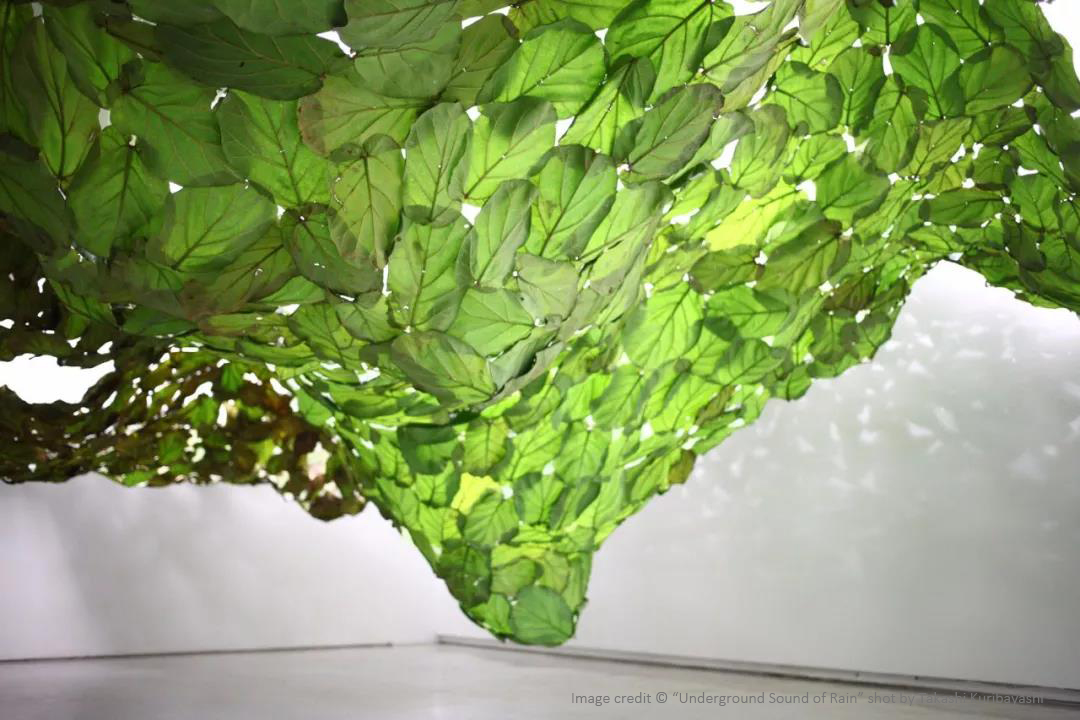Underground Sound of Rain
C-PLATFORM × Kuribayashi
Project Description
Kuribayashi often says, “The truth resides in places that are invisible. Once you are aware of that there is a different world out of sight, you will be living in a different way.” The invisible realm and its boundary is Kuribayashi’s main them throughout his career. He has been creating special installations that visualize things that cannot be seen in the daily life, such as behind the ceiling, floor, or seabed, so that he can reveal this invisible world.
Wald aus Wald (Forest from Forest)
The white trees that appear to float in the gallery space have been molded by Artist from japanese larch trees in Yamagata, using Awa washi (handmade paper). Having taken on the from of trees, the washi, which is made from natural materials such as kozo (hybrid mulberry tree) and mitsumata (paper bush), has become a symbol of the ecology of our natural world. Peer out through a crevice at the world that lies above the ground, and observe the forest from an insect’s perspective.
Underground Sound of Rain
It sewed thousands of leaves he picked up from the garden, and hung them from the ceilings. The work is titled Underground Sound of Rain (2013). The intertwining leaves form a draping overlay that reminds us of a green-brown color fabric with undulating contours – visually, this creates a dynamic effect. It is akin to leaves that fell onto the surfaces of a hill, only to be pulled back simultaneously by a strong magnetic force from the sky, the leaves draping as they float across the exhibition space. The range of nylon fabrics that bind the leaves presents themselves as beaming white vertical lines that drop from the ceilings of the gallery walls.
Q&A
Q: C-PLATFORM
A: Kuribayashi
Q::What compelled you to start this project?
A:“Wald aus Wald ” work was for the Sensing Nature exhibition, which took place at the Mori Art Museum in 2010. As it was in the title, it was a theme about the sense of nature, and When I thought what the closest nature for us was, I realized that the paper such as copy paper we usually use was originally made of wood and that it was also a part of nature. So, I decided to make a forest with paper in order to review these situations and the environment again.
The other “Underground Sound of Rain” was a work created on the year when I moved to Indonesia, with the image of the leaves that lay on the ground and the rain fell on the leaves. At that time, I made the work consciously with the situation that the rain containing radiation fell from the sky and infiltrated into the ground in the accident of the Fukushima Daiichi Nuclear power plant in Fukushima Japan.
Q: Could you briefly describe the process of installing it? Is there any interesting or difficult part to share?
A:First of all, I draw an idea drawing. I always write down what I have been thinking and researching, and I get hints from there and draw drawings. After that, I think about the materials and sizes, and build the ones that fit the budget. Communication with the assistant is very important and has a major impact on the work. However, it is most important to continue to imagine what you want to express and create until the end.
Q:How did people react to your work? Were they inspired to be aware of nature?
A:People who appreciate or experience my work understand and think about much of what I wanted to convey. There are many esoteric things in contemporary art, but I think that something that is simple and easy to convey is art. The relationship with nature is a matter of the viewers, not a guide by me.
Q:Is the work continue showing in space? If not, how do you deal with the materials after the show ?
A:Many works are dismantled and disappeared after the exhibition. Originally, things that can be returned to nature are the best, but because they express unnatural nature, everything does not go as you think.
Related Information
TAKASHI KURIBAYASHI born 1968 in Nagasaki, Japan. After graduating from university, Takashi studied in Germany, completing a master’s program at Düsseldorf Academy of Art in 2002. He creates works on the theme of “boundary”, consistently expressing the relationship between humans and nature. Combining natural materials such as plants, soil, and water, he creates large-scale installations of mountain and water scenes.
2018 Japonismes 2018, Enfance/Childhood, Paris, France
2017 Japan Alps International Art Festival 2017
2015: Spectrum – Spiral Garden 30th Anniversary Exhibition, Tokyo
2014: City and Nature, Sapporo International Art Festival 2014, Sapporo
2012: Towada Art Center, Aomori
2010: “Sensing Nature” Exhibition, Mori Art Museum, Tokyo
2006: Singapore Biennale, Singapore
Date
2018年12月18日
Category
Future Institute

